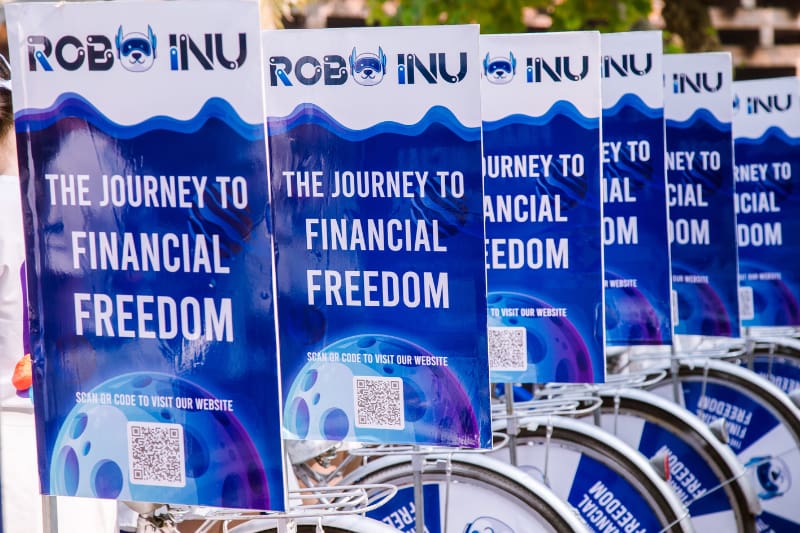Successful product launches require far more than just creating a great product - they demand a robust strategy that drives awareness, interest, and demand. A well-designed product launch plan ensures that all aspects, from the marketing strategy to sales efforts, align perfectly to support your product introduction. In this guide, we’ll explore the steps of a successful product launch plan, and provide insights on how to stay on track with your product introduction.
What is a Product Launch Plan?
A product launch plan is a strategic roadmap that outlines the entire process of launching a new product plan. It’s designed to help teams understand their goals, timelines, budget, and key deliverables. From product development to marketing and post-launch evaluation, a well-crafted launch plan ensures no step is overlooked.
A solid product introduction plan should answer important questions like:
-
What are the product's core features?
-
Who is the target audience?
-
How will the product be promoted?
-
What are the objectives of the launch?
Every successful product launch begins with a well-defined strategy and actionable plan. This roadmap outlines the key stages, tasks, and resources needed to bring the product to market effectively. The product release plan should be detailed and flexible, allowing adjustments as the launch unfolds. By clearly identifying goals, timelines, and key deliverables, businesses can keep the entire launch process on track.

Types of Product Launches
Not all product launches are created equal. Different launch types require tailored strategies, depending on your goals and product nature. Here are some common types:
Software Launch
Software launches require extra attention to technical aspects and often involve beta testing phases. Your product launch timeline needs to consider bug fixes, user feedback, and iterations before a full release.
In a software launch, the product often goes through several testing phases, such as beta testing, before it reaches the full customer base. These launches can be tricky because they demand feedback loops and fast iterations to fix bugs and optimize performance. Timelines in a software product release plan need to account for these iterations, allowing flexibility to ensure the software is polished before being rolled out to a larger audience.
Minimal Product Launches
A minimal product launch is often a soft launch or beta testing period. This strategy helps gauge customer feedback with minimal risk, giving companies a chance to fine-tune the product before a broader launch. Companies that adopt this approach often test with a small group of users to validate assumptions, collect feedback, and refine the product.
This soft-launch method is often used in startups or when companies are not fully confident in their market fit. Minimal product launches can help mitigate risks and allow for quick pivots if necessary, making them an integral part of agile business strategies.
Full-Scale Product Launches
In a full-scale product launch, the product is presented to a wide audience. This type of launch requires an extensive product release plan, which includes marketing campaigns, media coverage, promotional events, and sales strategies. VietnamEvent excels in organizing full-scale launch events to ensure brands make a strong entrance into the market, from different fields such as service, finance, beauty, or FMCG.

A full-scale product launch is high-stakes, high-reward. It involves aligning your entire organization - sales, marketing, development, and customer service - around the launch to ensure a smooth and impactful introduction to the market. A comprehensive product launch timeline helps orchestrate these moving parts, ensuring the launch delivers maximum results.
Guide to Creating a Product Launch Plan
Let’s walk through the essential steps needed to create a comprehensive and effective product launch plan. Here’s a detailed guide to ensure your product launch is well-structured and hits all the right marks:
1. Set Goals
Before you dive into the nitty-gritty details, establish clear and measurable goals. Are you looking to hit a certain number of sales in the first month? Perhaps your goal is to gain a certain amount of user feedback or secure market penetration in a specific region. Setting defined goals will keep your plan focused and purposeful.
The first step in creating any product launch plan is to establish clear, quantifiable goals using the S.M.A.R.T framework. Your launch goals will guide the entire process, whether they’re tied to revenue, market penetration, or customer engagement. Specific goals might include securing pre-orders, acquiring a set number of early adopters, or driving traffic to your website.
2. Conduct Research
Research is critical when launching a new product plan. Analyze the market, competitors, and customer needs. This stage will provide valuable insights into positioning your product and developing a unique selling proposition.
Understanding your competitors and target market is essential for developing a product launch strategy. This phase involves conducting market analysis, evaluating competitor offerings, and gathering customer insights. By identifying gaps in the market and understanding customer pain points, you can craft a more compelling value proposition that differentiates your product.
3. Develop a Messaging Strategy
Your product launch plan should include a strong messaging strategy. What are the key benefits of the product? How does it solve a problem or meet the needs of your target audience? Tailor the messaging to resonate with different segments of your audience.
Crafting a compelling message is crucial to the success of your launch. This involves clearly articulating the product's benefits and value proposition. By addressing your audience's needs and concerns, you can create messaging that resonates with them. Your marketing materials should reflect this messaging, whether you’re creating a product launch landing page, email campaigns, or social media content.

4. Set a Budget
A comprehensive product introduction plan requires careful budgeting. Allocate resources to product development, product launch marketing, advertising, promotional events, and post-launch activities. A clear budget will help keep your product launch on track financially.
An effective product launch checklist and plan can only succeed with a clear budget. This includes everything from product development costs to marketing, sales enablement, and customer support. Allocating a budget for promotional activities - such as paid ads, influencer collaborations, and event marketing - ensures your product gets the visibility it deserves.
5. Create Project Timelines
A critical component of any product launch plan is the timeline. Set realistic deadlines for the introduction stage of a product, from market research to the actual launch day. A detailed product launch timeline helps teams stay organized and meet key milestones.
Your timeline for product launch should be detailed and realistic. From pre-launch activities, such as creating promotional content and reaching out to influencers, to post-launch follow-ups and customer support, a timeline ensures that every phase of the launch happens as planned. Setting clear deadlines helps your team stay accountable and focused on the big picture.
6. Prepare Promotional Materials
Marketing is an essential aspect of the product release plan. Your promotional materials should be created well in advance and aligned with your messaging strategy. This could include social media campaigns, email newsletters, product launch press releases, etc and more.
Creating the right promotional assets is key to generating buzz around your product. This includes everything from teaser campaigns to launch-day announcements. A well-planned content calendar, including social media posts, email marketing, and paid ads, ensures that you build momentum leading up to the launch.
7. Launch the Product
After all the preparation, it’s time to officially launch the product. Whether you’re using an online platform or a live event, ensure all promotional activities are in sync with the launch date. VietnamEvent can assist you with managing launch events, ensuring everything runs smoothly, from planning to execution.
On launch day, all elements should come together seamlessly. Product demos, promotional offers, and launch-day events can create excitement and drive conversions. Be sure to have customer service and sales teams ready to handle inquiries and close deals as soon as the product becomes available.
8. Nurture Potential Customers
Post-launch engagement is vital for driving long-term success. Continue to nurture leads and potential customers through personalized marketing efforts. Use product launch email campaigns, social media, and other channels to stay connected.
Building relationships with potential customers doesn’t stop after the product launch. Nurturing leads through personalized marketing efforts - such as follow-up emails, tutorials, and promotions - helps keep your product top of mind and encourages continued engagement.

9. Review and Evaluate
After the launch, it’s time to review the entire process. Did you meet your goals? What worked, and what didn’t? A thorough evaluation helps refine future product launch strategies.
Analyzing the success of your product launch is a critical part of the process. Track key metrics such as sales performance, customer feedback, and website traffic. By reviewing what worked and what didn’t, you can make improvements for future launches.
Conclusion
Launching a product successfully requires careful planning, strategy, and execution. By following these steps and creating a structured product launch plan, you can maximize your chances of success. At VietnamEvent, we specialize in organizing events for product launches, ensuring that every aspect of your launch is taken care of, from start to finish.
Whether you're planning a minimal product release or a full-scale event, VietnamEvent is here to help you elevate your launch experience.
---------------------------------------------------------------------------------------------
Contact information:
Vietnam Event | Local Brand - Global Expert
Hotline/Mobile/Whatsapp: (+84) 913 929 182 - (+84) 918 640 988
Email: annie@vietnamevent.com
-
29 Doan Thi Diem str., Dong Da dist., Hanoi
-
217 Tran Phu str., Hai Chau dist., Danang
-
5 Hoa Cau str., Phu Nhuan dist., Ho Chi Minh City
-
Others: Singapore


